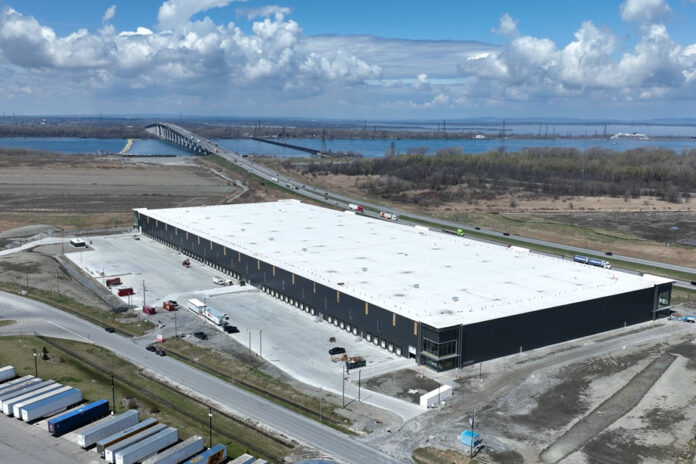The City of Beauharnois is on its way to winning its bet. The industrial land purchased from Hydro-Québec has found takers. The buildings come out of the ground one after the other. And the City is beginning to collect the taxes required to fund the reconstruction of municipal infrastructure.
Recent industrial builds include IKEA’s distribution center, a 112,000 m2 juggernaut with 102 loading bays, retailer Hart and DLS Logistics’ warehouse.
There is also the promoter OleaDev Groupe Immobilier which had Frare build
It is a 39,000 m2 building with 12 m ceilings, high enough to store six pallets. Discussions are advanced with an end user, who would take up the entire area. OleaDev acquired the neighboring land from Hydro-Québec to expand the building by 17,000 m2 at the first opportunity.
The value of industrial permits reached 60 million last year. To take stock of all this excitement, La Presse recently met with the mayor and his economic team at the office of the MRC de Beauharnois-Salaberry.
“There is an investment capacity of 2.5 billion in all sectors without dezoning our agricultural lands, without touching wetlands and without destroying our forests. There are many cities that are jealous of us,” says the mayor of Beauharnois, Alain Dubuc (no relation to the author of this text).
Of 2.5 billion, 1 billion is on the residential side to build 5,000 homes over the next 10 years. The balance leans towards the industrial side, half of which is planned for the Google server center. By decree, the Quebec government has dezoned 66 hectares of agricultural land to accommodate the American multinational. The investment estimated at 735 million more than two years ago is likely to swell, inflation obliges.
The project announced in 2021 has still not come out of the ground.
In addition to the Google building, there remains to be built in the industrial park of Highway 30 the phase two of Frare
With the industrial boom of recent years, the wheel of growth has started to turn.
Some 860 homes have sprung up over the past three years. In 2023, 552 permits will be issued for new housing.
Residential developments will be concentrated north of boulevard Cadieux, where the company F.I.T. Venture bought the Perras fields in 2019, in a non-agricultural area. Phase one of 160 units was built last year. Phase two of 390 homes is expected to launch this fall. Higher density projects are expected in the city center, near the water.
Residents attract retailers. Super C opened its doors in the spring in the commercial center built by the Harden group at exit 26 of Highway 30. Maxi has also announced its arrival in the city of 14,000 inhabitants.
Beauharnois has long suffered from the decline of its manufacturing activities. “The arrival of Highway 30 a decade ago changed the game,” says Linda Phaneuf, Director General and Clerk-Treasurer of the MRC.
Under Mayor Claude Haineault, the City paid $30 million in 2012 to acquire 1.3 million square meters of non-agricultural land from Hydro-Quebec, which operates a run-of-river power plant.
The additional cash inflows must be used to pay the bill for the rejuvenation of municipal infrastructures that have reached the end of their useful life, while avoiding burdening citizens with heavy taxes, the number of which was declining before 2012.
Just for the IKEA distribution center, valued at 226 million, municipal taxes exceed 4 million in 2023.















